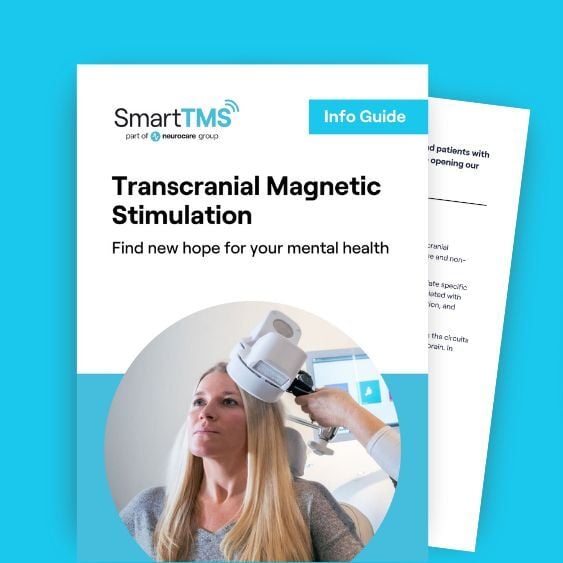Misconceptions and Stigmatisation in OCD
March 17, 2024 - Smart TMS

How OCD is represented in language and popular media
Most people are no strangers to the current rhetoric that portrays OCD as a personality trait, solely defined by a minor inclination towards organisation and cleanliness. Many of us may have heard, or even been guilty of, using the phrase “I am so OCD” or “I’m a bit OCD”, to miscategorise a slight propensity for perfectionism and tidiness as obsessive-compulsive disorder. However, when the language and media we consume is littered with misconceptions and stereotypes pertaining to a serious condition, it leads to higher instances of shame and self-stigmatisation, lower rates of disclosure due to fear of judgement (Kaur et al, 2022), and misinformation spread among the general public (and OCD sufferers alike) about the numerous ways in which it can present itself.
2. So what is OCD?
Obsessive compulsive disorder is a condition characterised by persistent, unwanted intrusive thoughts and mental images (obsessions). These thoughts may trigger or accompany repetitive behaviours (compulsions), that are typically acted out to relieve distress (Jansen et al, 2020). The nature of OCD is often debilitating to the sufferer, causing an array of nuanced obsessions and behaviours that hinder one’s quality of life and relationships.
Examples of obsessive themes in OCD include, but are not limited to:
- Relationship OCD
- Sexual Orientation OCD
- Somatic OCD
- POCD
- Harm OCD
- Unwanted sexual thoughts OCD
- False memory OCD
- Religious scrupulosity OCD
- Contamination OCD
- Hoarding OCD
- “Pure O”: This variant is not referenced medically and does not occur as a separate diagnosis to OCD. Pure O is a term popularised within the online OCD community, to describe the occurrence of persistent intrusive thoughts, without the presence of overt compulsions. (Williams et al, 2011).
The compulsions within this OCD subtype may be harder to recognise compared to societal expectations of how OCD is physically presented. Compulsions in “Pure O” tend to present as mental compulsions, checking one’s own thoughts and reactions, checking the body for physical sensations and responses, reassurance seeking etc.
(More information on the types of OCD and their definitions can be found at https://www.ocduk.org/ocd/types/ ).
OCD presents itself in numerous ways, hence the need to dispel the stereotypes and false information surrounding the disorder. This enables people who may have OCD (as well as associated parents, guardians or caregivers) to be more equipped in identifying the disorder and seeking appropriate treatment.
3. Treatment options available: CBT, ERP, SSRI’S, HYPNOTHERAPY
The current first line OCD treatment options that have been recommended by the National Institute for health and Care Excellence (NICE) include: Cognitive Behavioural Therapy, Exposure and Response Prevention Therapy and/or Selective Serotonin reuptake inhibitor (SSRI) medications. Around 25% to 40% of patients fail to respond to all these conventional treatment modalities (Goodman et al, 2021) and are therefore considered to have treatment resistant or Refractory OCD.
4. Transcranial Magnetic Stimulation in the treatment of Refractory (Treatment Resistant) OCD
A network meta-analysis was conducted by Fitzsimmons et al (2022), that reviewed studies where a total of 368 patients were treated with TMS and 294 with sham (placebo) treatment. The findings showed that true TMS treatment was significantly more effective in the treatment of OCD compared to sham treatment. Moreover, at Smart TMS, 30% of our OCD patients saw at least a 35% improvement to their symptoms, while 28% went into remission and no longer met the clinical diagnostic criteria for having OCD.
5. Consequences of stigmatisation
Stigmatisation and misinformation exacerbate shame, secrecy, and misdiagnosis. These factors can lead to self-stigmatisation, causing OCD sufferers to take an average of 10.5 years to begin treatment and is also linked to poorer treatment outcomes (Ociskova et al, 2021). Facing social stigma contributes to low adherence to medication and therapy, which is closely linked to an increased risk of relapse (Ansari et al, 2020). Improving knowledge of the disorder amongst health care professionals and schoolteachers, also plays an important role in early detection and reduced peer stigmatisation (Chaves et al, 2021).
OCD can disrupt tasks of daily living and is often tiring to endure. When pop culture portrays OCD as a quirky or even humorous personality trait, it diminishes the challenges faced by a person who genuinely suffers with the condition. It also creates barriers in terms of identifying OCD and seeking diagnosis. Breaking the stigma and educating ourselves and the general population with knowledge about OCD, will have a positive impact on increasing early detection rates and improving the quality of life of those living with the condition (Chaves et al, 2022).
Written by Seraya, Smart TMS Manchester Practitioner
References:










